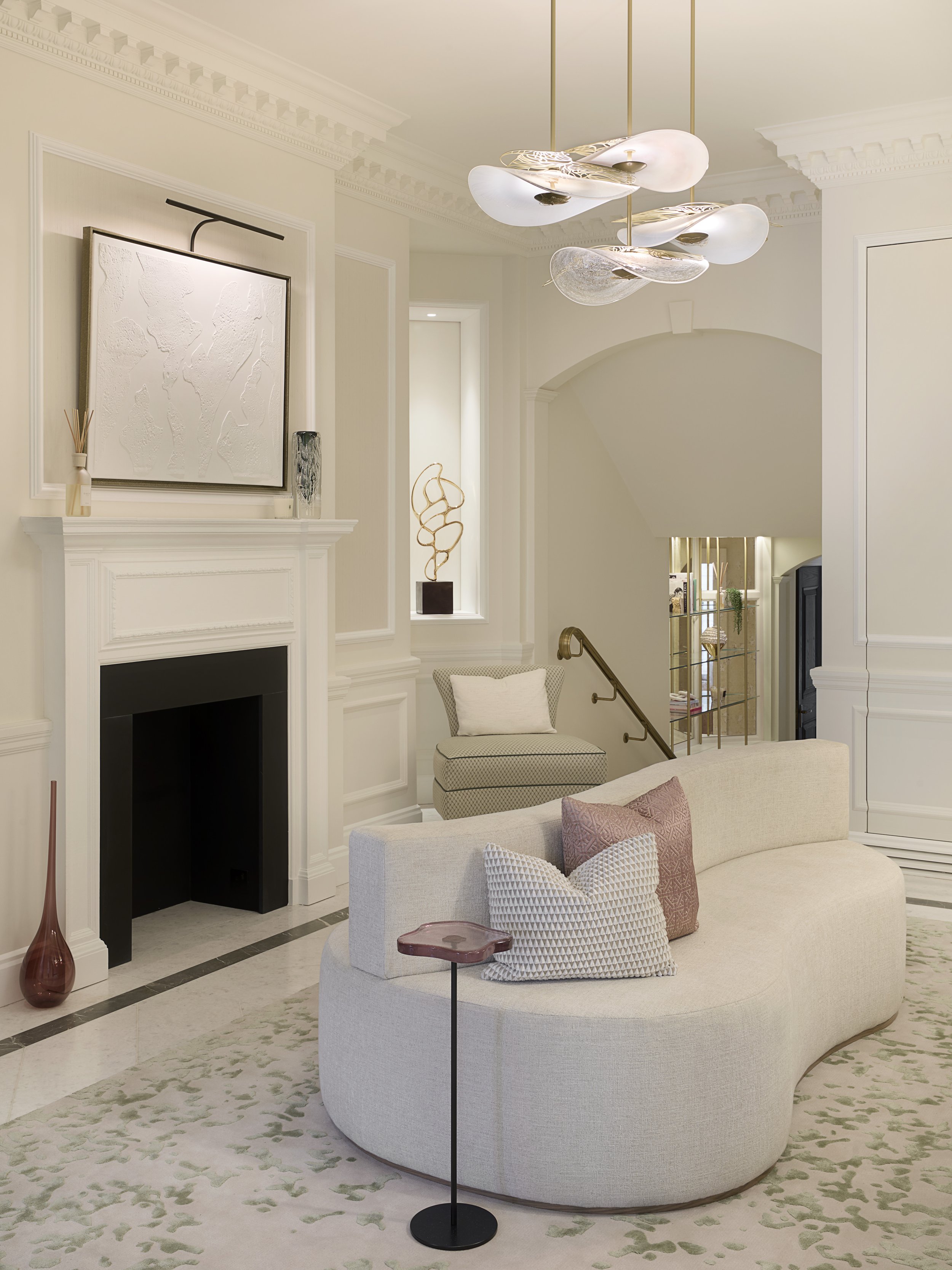Suitability of Sculptural Lighting in the Home
Sculptural lighting consists of carefully considered illumination intertwined with narrative-driven, three-dimensional artwork.
There are many factors involved when choosing a suitable, artistic lighting feature for an interior space. The size, shape, material, light output, practicality, maintenance, location of feature and the key viewpoints, all add up to creating the perfect design.
THE DESIGN
A bespoke or customised lighting feature should be designed to acknowledge the surrounding area to which it will be situated, and where the questions "What does the space need?" and "What story needs to be told?" should be asked at concept proposal stage to build on the narrative of the luminaire. The illuminated ‘artworks’ often combine the use of materials and finishes found in the interior scheme to ensure continuity in the overall room, which can be achieved through existing products, customisation of existing lighting collections or the creation of a bespoke feature.
THE VIEW
Walkways, entrances, and specific viewpoints within an interior space are taken into consideration when creating a sculptural lighting piece, adding to the overall design journey. A viewer's eye is naturally drawn to light, and so should be used to its advantage to highlight areas in the room, creating space and to aid expansion . Examples of this can be accentuating mid-areas with sculptural wall lights or focusing on the grand central area, showcasing a magnificent, unique, suspended luminaire to draw the eye up into the vast negative space above.
Rock & Soar ‘Movement of Matter’ collection
Compositions of suspended lighting installations (as above) are most suited to environments that have a substantial ceiling height, allowing the viewer to follow the artwork, sit in awe, or feel completely immersed by the magic of the body and scale of the work. However, it is not impossible to implement these types of sculptures within low ceilings; decorative components that are suspended horizontally rather than vertically can give you more room to play with the composition.
Artworks or sculptures that involve repetition of form create emotional resonance between the viewer, the artwork itself, and the surroundings which humans thoroughly enjoy due to the understanding of pattern, familiarity, and rhythm. It is an in-built cognitive trait, and designing a space with this in mind adds to the overall well-being and fulfilment of the residents.
THE NARRATIVE
It is possible to create personal meaning and a hidden story behind the illuminated sculptural design, from a tailored composition to a personalised etching or sculptural element that represents something sentimental to the end-client. An abstract interpretation will give the essence of the story, yet ensures a level of privacy of meaning to viewers who may just enjoy the aesthetic of a well-designed luminaire.
‘Botanical Pendants’ Story-telling Sketches
‘Botanical Pendants’, Marylebone Project
MATERIAL & LIGHT
Finding the most suitable type of light output when designing a decorative lighting feature for a space is of key importance, not just for the colour temperature or CRI, but understanding if the materials of the feature will alter the outcome of light.
Material plays an important role in the manipulation of light, including the positioning of the light source in relation to the material itself. Unwanted shadowing, reflections, and glare can often be present if not considered during the development process. Simple attributes, such as the direction of grain in a satin brass finish in relation to the LED, can cause a striped glare on the metal surface. Therefore, testing is required to understand the small details and the material's reaction to light.
A transparent, polished, textured surface - such as faceted glass or cast acrylic - will maximise the surface angles and reflections to achieve a desired glistening or sparkling effect - perfect for focal points and lively spaces. While smooth matt, frosted, or white surfaces work wonders for scattering and diffusing light, enabling a softer light for a more atmospheric effect for calming interior spaces.
ARTISTS OR DESIGNERS
There are a number of design studios (of product and engineering backgrounds) creating "sculptural lighting" pieces that develop work using craft-based materials and processes, as well as artists who are driven by material and narrative, incorporating lighting into their pieces but may not be as technically-minded. There is a fine line between the two, where both industries can intertwine, collaborating to create beautifully sculpted compositional artworks with functional lighting. Designing sculptural artistic lighting requires technical and structural understanding, as well as material knowledge and an artistic perspective.
‘Shell Pendants’, Marylebone Project




